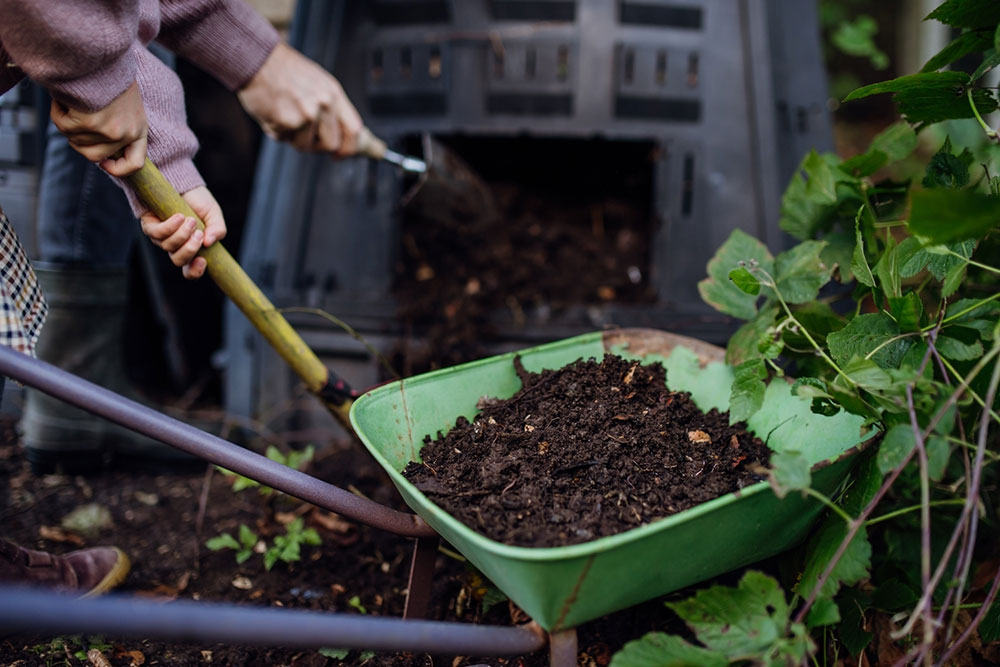Top 10 Natural Fertilizers for Hydrangeas
Hydrangeas are popular blooms in several vibrant colors, including stunning shades of blue. An interesting fact about hydrangeas is that they have large flower heads, which typically weigh down the stems. But for the flowers to bloom fully, it is imperative for them to receive the right fertilizers in the proper manner. While there are several chemical options in the market, natural fertilizers for hydrangeas will shield the flowering blooms from harsh chemicals.
Top 5 fertilizers for hydrangeas
Epsom Salt
The fertilizer contains sulfur and magnesium. To use it, one must take a tablespoon of Epsom salt and add it to 1 gallon of water.

Benefits
It is safe and non-toxic.
It helps with adequate chlorophyll production.
The chlorophyll triggers photosynthesis and gives hydrangeas energy to thrive and grow.
Adding Epsom salt boosts the color of the leaves and flowers.
It also promotes flowering and fruit development.
This natural fertilizer for hydrangeas strengthens the root.
It boosts root strength, offering more stability to the plants.
It facilitates better nutrient uptake.
One must note that Epsom salt should not be added if the hydrangea soil has sufficient magnesium. Moderation is the key, so using it once a month should be enough.
Coffee Grounds
The fertilizer contains nitrogen, magnesium, phosphorous, and potassium. One should take two cups of used coffee grounds and five gallons of water to use it . Mix them well and let it sit for a few days. Strain the liquid and use it to water the hydrangeas.
Benefits
Coffee grounds help in making alkaline soil acidic.
They also help with overall healthy hydrangea growth.
It is a good natural fertilizer for hydrangeas to bloom brighter.
One should test the soil’s pH before using coffee grounds. Regular application is necessary to maintain soil acidity, and its pH level should not exceed 6.5.
Banana Peels
The fertilizer is rich in potassium. One must Take 2-3 banana peels, chop them, and bury them near the plant’s base. As the peels decompose, they release potassium in the soil. Alternatively, one can dry the peels, grind them into smaller pieces, and spread the ground peel around the hydrangeas. To dry the peels, keep them in the sun for 2-3 days or put them in the oven set to the lowest temperature.
Benefits
It boosts plant health.
Banana peels help in growing lovely, bright blooms.
Note
Do not use over 280 grams for one bush.
Consider mixing banana peels with other types of mulch.
Apply 2-3 times in a growing season.
Avoid using fresh banana peels.
Do not soak banana peels in water.
Homemade Compost
The typical composition of this natural fertilizer is fruit peels, coffee grounds, and vegetable trimmings. There are two types of homemade compost: Ericaceous compost for blue flowers from lace-cap or mophead hydrangeas and all-purpose compost for all varieties. To make it, one must collect kitchen and lawn scraps, pile them in the backyard, and let earthworms and microbes break them down. After a few days, the waste will look crumbly and dark.
For new hydrangeas, add a thick layer of 3-5 inches to the soil and till it into the soil at a 6-8 inches depth before planting. For established hydrangeas, use compost as mulch and spread 4-6 inches around the base. Use it in early spring or winter end, leaving space around the stem.
Benefits
They improve soil drainage.
They amplify the nutritional value.
They contain several nutrients that are easy for plants to absorb.
They improve soil structure.
They do not harm the hydrangea roots.
Note that one must apply a second feeding in summer only if one lives in hotter regions.
Wood Ash
It contains calcium, potassium, and magnesium. To use it, one must scatter a thin layer around the base and avoid letting it come in contact with leaves or stems. Use 1 cup per square meter and lightly mix with the top layer. Water it into the soil as required.
Benefits
It raises the soil’s pH by making it more alkaline.
Wood ash helps in making hydrangeas strong.
The calcium present helps with cell wall development.
Potassium helps with flowering and healthy growth.
Magnesium improves plant vigor.
Wood ash enhances aeration and soil drainage.
It improves nutrient uptake.
Note that acidic soil leads to blue flowers, while alkaline soil leads to red or pink flowers. One must avoid using treated wood, as it will contain chemicals. This fertilizer must be used in moderation, and young branches are preferable since their ash has more potassium.
Additional natural fertilizers that can be used for hydrangeas
Horse and Cattle Manure
It is rich in nitrogen and microelements, providing valuable nutrition to hydrangeas. The pallets can be applied around the hydrangeas. Additionally, the soil needs to be moist for nutrient penetration.
Nettle Manure
It is rich in nitrogen, which helps with blossoming. To make it, one must take 1 kg of fresh leaves and 10 liters of rainwater. Mix it in a saucepan, let it sit for two weeks, and water the plants with the mixture.
Vegetable Cooking Water
Vegetable cooking water is rich in vitamins, making it a great natural fertilizer for flowering hydrangeas. It works as a nutrient source for the blooms. To use it, one must let the water cool after cooking and water the plants with it.
Vinegar solution
One can use a vinegar solution to turn pink hydrangeas blue. To make this solution, one needs to take a cup of white distilled vinegar, mix in 1 gallon of water, and spray it on the leaves, ensuring complete coverage.
Eggshells
This natural fertilizer is rich in calcium, which supports overall plant strength. Eggshells also help in cell wall development .

